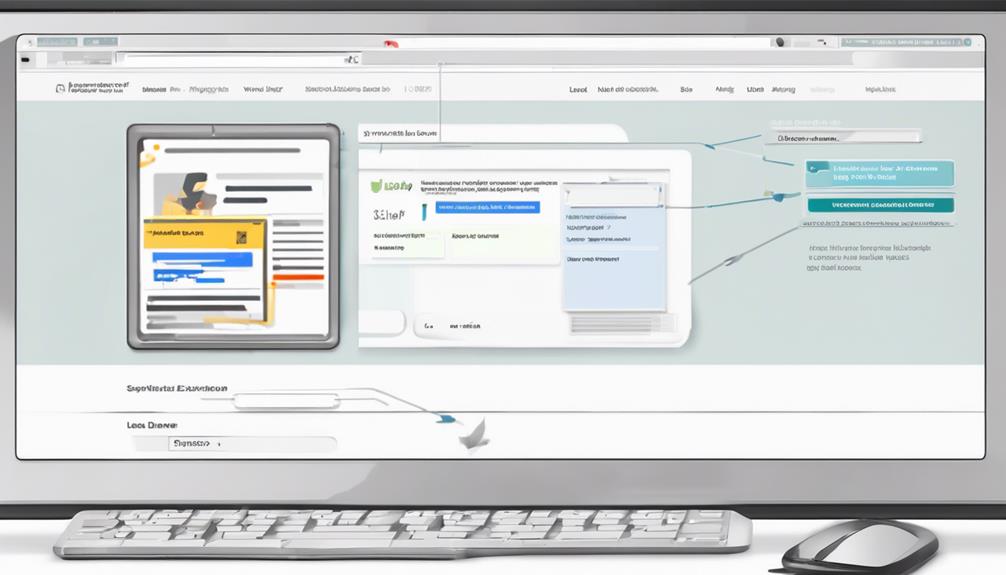To manage lead data extraction services, you need a strategic approach that ensures data accuracy and aligns with your business objectives. Setting clear goals and implementing quality control measures are just the beginning. But what happens when the extracted data doesn’t meet the required standards? How do you navigate the complexities of analyzing results and making crucial adjustments? Stay tuned to discover the key steps in effectively managing lead data extraction services and optimizing your decision-making processes.
Understand the Service’s Features
Looking to delve into the world of lead data extraction services? When exploring these services, it’s crucial to understand key features like data accuracy and service customization. Data accuracy is essential in lead data extraction services as it ensures that the information collected is reliable and up-to-date. Reliable data leads to more effective decision-making and targeted marketing strategies. When choosing a service provider, make sure they prioritize data accuracy to maximize your results.
Service customization is another vital aspect to consider. Every business has unique needs and objectives, so the ability to tailor the extraction service to fit your specific requirements is crucial. Customization can include selecting the types of data to extract, defining data sources, and determining the frequency of extraction. A service provider that offers customization options can help you get the most out of your lead data extraction efforts.
Set Clear Objectives
To effectively harness the power of lead data extraction services, it is imperative to set clear objectives that align with your business goals. Goal setting is crucial in ensuring that the data extracted meets your specific needs. Here are three key aspects to focus on:
- Data Accuracy: Define the level of accuracy required for the extracted data. Establish metrics to measure the precision of the extracted information against the original source.
- Performance Tracking: Implement systems to monitor the performance of the lead data extraction service. Track key performance indicators (KPIs) such as extraction speed, volume, and quality to ensure it meets your objectives.
- Quality Control: Develop processes for quality control to guarantee the extracted data is reliable and consistent. Regularly audit the extracted data to identify and rectify any discrepancies or errors.
Monitor the Extraction Process
Setting clear objectives for your lead data extraction services is just the beginning. Once the extraction process is in motion, it is crucial to monitor it closely to ensure the quality and accuracy of the extracted data. Implementing quality control measures is essential to maintain the integrity of the data being extracted. Regularly checking and validating the extracted data against predefined criteria or standards will help in identifying any errors or inconsistencies early on.
To effectively monitor the extraction process, establish checkpoints at different stages of the extraction to verify the data quality. These checkpoints can include comparing the extracted data with the original source, checking for completeness and accuracy, and ensuring that the data meets the required standards. Data validation techniques such as cross-referencing, pattern matching, and data profiling can be valuable tools in ensuring the accuracy and reliability of the extracted data.
Analyze the Results
Upon completion of the lead data extraction process, the next crucial step is to analyze the results obtained. This phase involves data interpretation and reporting analysis to derive meaningful insights from the extracted information. Here’s how you can effectively analyze the results:
- Data Interpretation: Begin by examining the extracted data to identify patterns, trends, and outliers. Look for correlations between different variables and assess the overall quality and relevance of the information collected.
- Reporting Analysis: Create detailed reports summarizing the key findings from the extraction process. Include visual representations such as graphs or charts to present the data in a clear and understandable format. Analyze the reports to draw conclusions and make informed decisions based on the extracted data.
- Actionable Insights: Identify actionable insights that can drive strategic decision-making within your organization. Use the analyzed results to optimize marketing strategies, improve lead generation efforts, and enhance overall business performance.
Make Necessary Adjustments
Consider making necessary adjustments post-analysis of the extracted lead data to enhance the effectiveness of your data-driven strategies. Begin by focusing on data accuracy. Ensure that the information extracted is correct and up-to-date to avoid making decisions based on flawed data. Look for patterns of inaccuracies and address them promptly to maintain the integrity of your database.
Additionally, prioritize process efficiency. Streamline the data extraction process by identifying bottlenecks or redundant steps that may be impeding the flow of information. Implement automation tools or software that can expedite the extraction process without compromising accuracy. Regularly monitor the efficiency of your data extraction methods and make adjustments as needed to optimize the overall workflow.
Frequently Asked Questions
How Secure Is the Data During Extraction?
Your data is secure during extraction due to robust data encryption and compliance measures. These ensure that sensitive information remains protected throughout the process, giving you peace of mind regarding the security of your data.
Can the Extraction Service Handle Multiple Data Sources?
Yes, the extraction service can handle multiple data sources efficiently. Data validation ensures accuracy, while integration options streamline the process. You’ll find managing lead data extraction services easier and more effective with these capabilities in place.
Is There a Limit to the Amount of Data That Can Be Extracted?
You’ll never hit a wall with data extraction scalability! However, even the most advanced services have extraction speed limitations. While vast amounts can be extracted, be mindful of the speed at which it’s done.
What Happens if There Are Errors in the Extracted Data?
If errors occur in the extracted data, you must focus on error resolution to enhance data accuracy. Implement robust data validation and quality control processes to rectify errors swiftly and ensure the overall integrity of the extracted data.
Are There Additional Costs for Ongoing Support and Maintenance?
When you consider ongoing support costs and maintenance fees, it’s crucial to understand the potential impact on your budget. These additional expenses can vary based on the level of service required and the complexity of your lead data extraction services.



